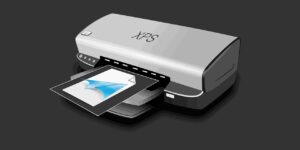In the digital age, choosing the right scanner file type can significantly impact the quality and usability of your documents. Whether you’re archiving old photos, preserving important paperwork, or sharing creative projects, understanding the differences between file formats is crucial. Each type offers unique benefits and limitations that can affect everything from image clarity to file size.
From the ubiquitous PDF to the versatile TIFF, the array of options might seem overwhelming at first. However, a closer look reveals which formats are best suited for specific tasks. This guide breaks down the most common scanner file types, helping you make informed decisions for your scanning needs.
Scanner File Types
PDF (Portable Document Format)

PDF files are highly versatile and widely used, offering consistent formatting across various devices and platforms. PDFs support text searching, hyperlinks, and annotations. They’re ideal for sharing, archiving, and ensuring document integrity.
JPEG files are commonly used for photographs and images due to their compressed format. This reduces file size, making JPEGs suitable for web use and efficient storage. However, repeated compression can reduce quality.
PNG (Portable Network Graphics)
PNG files provide lossless compression, making them suitable for images that require transparency and detailed graphics. These files maintain quality without degradation, ideal for logos and web graphics.
PDF Files
PDF files are widely used for their versatility and compatibility across various platforms. They retain formatting, making them ideal for document sharing.
PDF files are platform-independent documents that maintain their layout regardless of the operating system or software. They are compressed files that efficiently reduce storage space without losing quality. Security features like password protection and encryption ensure document confidentiality.
PDF/A format ensures long-term archiving and future-proofing. They include embedded multimedia elements (images, links, buttons) and annotations. It’s possible to digitally sign PDF files, adding an extra layer of authenticity.
Downsides of PDF
Editing PDF files requires specialized software, unlike native file types like DOCX. They often have larger file sizes compared to basic text files, which can be problematic for email attachments with size limits. Text extraction can be challenging, especially with scanned PDFs, due to potential OCR inaccuracies.
JPEG Files
JPEG files are commonly used for scanned photographs and web images. They offer a balance between image quality and file size.
Benefits of JPEG
- Compression efficiency: JPEG files use lossy compression to reduce file size, making them ideal for quick sharing and storage without consuming much disk space.
- Wide compatibility: Most devices and software applications support JPEG files, ensuring easy access and viewing across different platforms.
- Color range: JPEG supports 24-bit color, enabling it to represent millions of colors, which is advantageous for detailed images and vibrant photographs.
- Quick loading: Due to their small file size, JPEG images load faster on web pages, enhancing user experience, especially on slower internet connections.
- Quality loss: Each time a JPEG file is saved and compressed, it suffers some loss of image quality, which can become noticeable over multiple edits.
- Limited transparency: JPEG files don’t support transparent backgrounds, making them less suitable for graphic designs requiring such features.
PNG Files
PNG files, standing for Portable Network Graphics, are widely used in scanning for their ability to maintain high image quality. This file type is favored for detailed graphics and images that require transparency.
PNG files offer several advantages:

- Lossless Compression: PNG maintains original image quality without data loss, which is essential for high-fidelity graphics and detailed images.
- Transparency Support: PNG supports alpha channels, allowing portions of an image to be transparent, which is beneficial for web design and graphic overlays.
- Wide Compatibility: Many software applications and web browsers support PNG, making it a versatile choice for both online and offline use.
- Rich Color Depth: PNG files can handle up to 16 million colors, ensuring that images retain their vibrancy and detail.
- Large File Size: Due to lossless compression, PNG files can be significantly larger than formats like JPEG, affecting storage and transfer speeds.
- Limited Animation Support: Unlike GIF, PNG does not support animations, which can be a drawback for certain applications.


